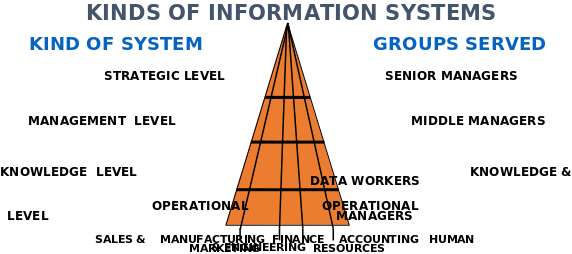Information (both electronic and non-electronic) to an organization is as blood to a human being. There is an outstanding need for any given organization to manage its information well if it is to meet its mission at minimal costs and optimal profits.
Management information systems are the means through which organizations efficiently manage and administer security to their information. Management information systems facilitate effective decision-making and general management in an organization and to do these they utilize technology (computer software and hardware) and varying manual procedures (Shelly et al, 1).
Certain key elements in an organization dictate the design, implementation and administration of its management information systems. These key elements are organization’s people (or personnel), politics and culture, structure and operating procedures.
Sales and Marketing, manufacturing and production, human resources, accounting and finance are the major business functions that are logged by management information systems in an organization.
Through taking into account the different organizational levels within an organization management information systems are classified into four main types, namely, operational level systems, knowledge level systems, management level systems and strategic level systems (Martakos, 8).

Operational level systems are designed to function at the operational level of an organization. The importance of management information systems at the operational level is that they track and monitor an organization’s elemental activities and transactions. Queries invoked against management information systems at the operational level provide information pertaining to the organization’s inventory, sales, payments and credit decisions.
Knowledge level systems are designed to function at the knowledge level of an organization, which is characterized by an organization’s knowledge and data workers. The importance of knowledge level systems is that through supporting an organization’s knowledge and data workers they enable it (the organization) to effectively absorb new knowledge.
In addition, knowledge level systems are also important as they help an organization to control the flow of its paperwork. Workstations and office systems are some of the examples of knowledge level systems.
Management level systems are designed to function at the management level of an organization. The importance of management level systems is that through supporting an organization’s middle managers they facilitate effective monitoring and control, decision-making and administration of an organization.
An example of a management level system is one that tracks the monthly sales of an organization. Strategic level systems are designed to function at the strategic level of an organization. The importance of strategic level systems is that through supporting an organization’s senior management they facilitate long-term strategic planning of an organization. An example of a strategic level system is one that forecasts sales for a given period of time e.g. 10 years.
Another 6 main types of information systems are deduced from the above four types of information systems. Transaction processing systems are operational (or TPS) level systems that are built to oversee and record elemental transactions in an organization (Shelly et al, 7). Knowledge worker systems (or KWS) are knowledge level systems built to facilitate the creation and integration of new knowledge in an organization (Shelly et al, 21).
Office systems are knowledge level systems that are built to optimize the performance of data workers (Shelly et al, 2). Management information systems (or MIS) are management level systems built to facilitate effective monitoring and control, decision-making and administration of an organization (Shelly et al, 16).
Decision support systems (or DSS) are management level systems built to facilitate decision-making whether structured or unstructured (Shelly et al, 20). Executive support systems (ESS) are strategic level systems built for an organization’s senior management to facilitate unstructured decision-making (Shelly, 1).
Works Cited
Martakos, Drakoulis. The strategic role of information systems, 1996. Web.
Shelly, Cashman And Vermaat. “Types of information systems”, 2000. Web.